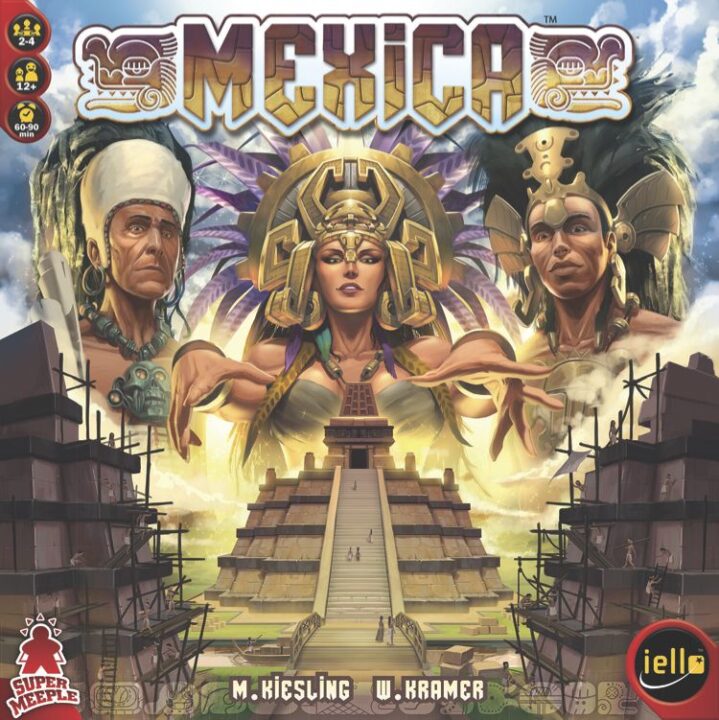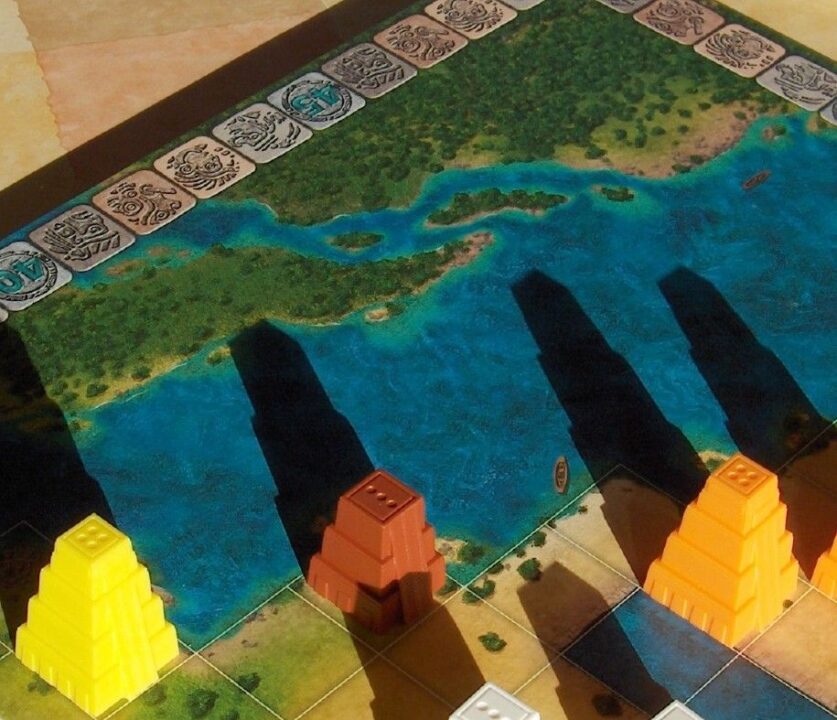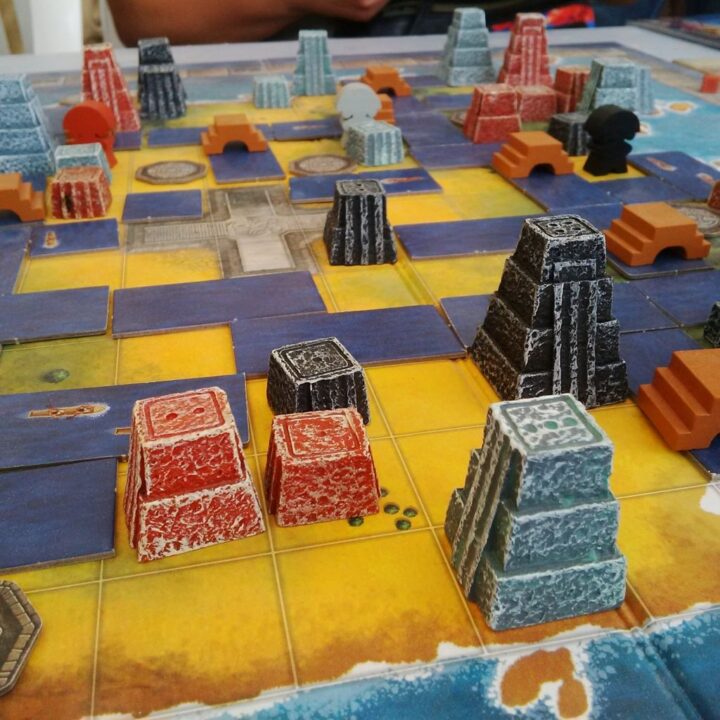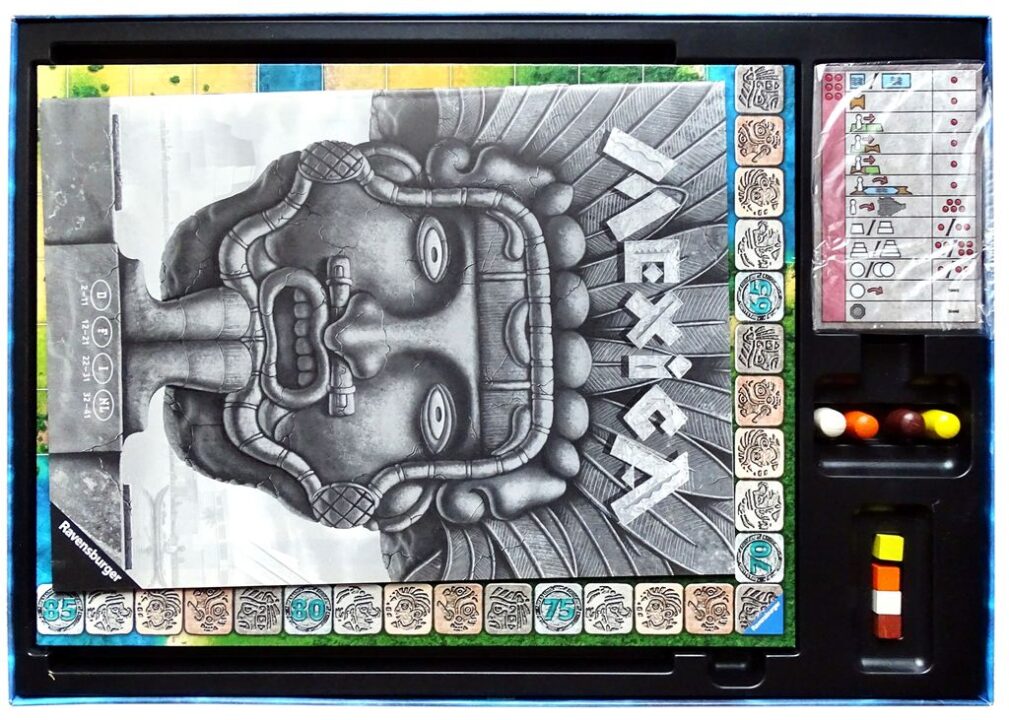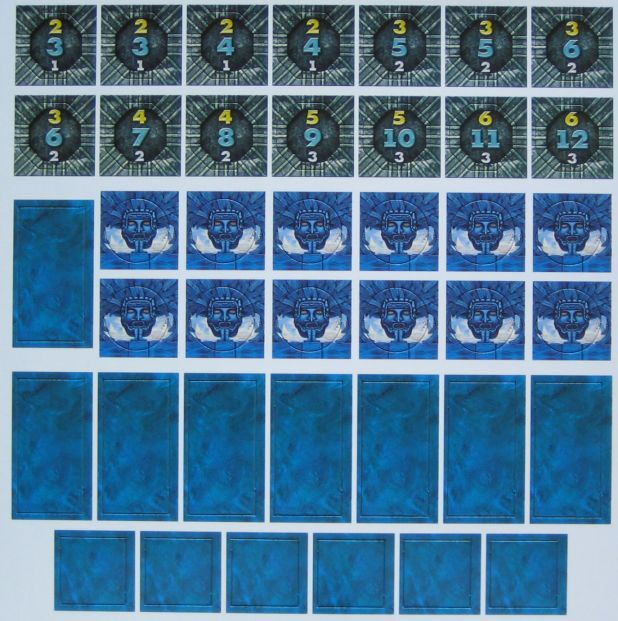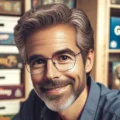Ever fought your friends over ancient city blocks, one chunky pyramid at a time? Well, that’s exactly what happened at my table the night we cracked open Mexica. If you want a review from someone who’s actually got their hands all over the pieces, you’re in the right spot. This review covers everything—artwork, fairness, tactics, and if it’s worth picking up when your game shelf is already groaning. Spoiler: my mate Steve is still salty about losing, and I’m still bragging about my city planning skills.
How It Plays
Setting up
First, unfold the board and place it where Steve can’t spill his drink on it (trust me). Each player picks a color, grabs their tokens and pyramids, and takes a reference card. Place the district tiles in a pile and shuffle the canal tiles. Randomly place some bridges around the board so everyone argues about the best spots from the start.
Gameplay
On your turn, spend 6 action points for stuff like moving your figure, building canals, placing bridges, or founding districts. Try to zone off perfect neighborhoods and plop down your pyramid in the best spot. But don’t get too comfy—someone will probably block you the second you get clever. Watch out for sneaky canal placements and last-minute bridge drop-ins. The game rewards foresight, a little bit of risk, and a heap of blocking Steve at every chance. This is not a game where you can just zone out!
Winning the game
The game ends after a frantic scoring round when all districts are claimed and pyramids are built. Count up points for district control, remaining bridges, and other sneaky bonuses you might have ignored. Whoever has the highest score is crowned the Emperor of Tenochtitlan, and gets to gloat until next game night. Spoiler: It probably won’t be Steve.
Want to know more? Read our extensive strategy guide for Mexica.
Mexica: A Game of Clever Tactics and Sneaky Moves
Let me tell you, the game mechanics in Mexica really got my group talking—and not always in polite words, especially after a well-placed canal ruined someone’s master plan. Mexica puts you smack in the heart of Tenochtitlan, where you use action points to build canals, cross bridges, and grab land for your mighty temples. Each turn you get six precious points to spend. Will you build and expand your district, or scoot your Mexica pawn across the board to outfox your rivals? Every choice feels important, and that’s what I love.
The game rewards clever planning and risks. You’re usually mapping out your scheme, but here’s the trick: your buddies are doing the same, and they’ll flip your plans upside-down if you’re not careful. Player interaction here isn’t just side-eye across the table. You’ll constantly block, outbid, or snatch spaces from each other. It gets real spicy when someone swoops in and claims a prize district right under your nose. I once watched Kevin (who’s normally as threatening as a teapot) become the Aztec overlord thanks to some sneaky last-minute temple placements. You won’t win just by going solo—you have to keep an eye on everyone and be ready to switch gears.
And here’s what I really dig: Mexica avoids the luck trap. Success comes down to your actions and a little psychology. No dice rolling to save you here! Sometimes, though, analysis paralysis creeps in. My buddy Claire once spent longer planning her move than I did planning my last vacation. Still, it’s a small price to pay for such tactical joy.
If you want to know if Mexica looks as great as it plays, just wait for the next section—I’ll talk about the components and artwork (spoiler: it’s not all brown and beige!).

Component Quality and Artwork in Mexica: A Real Fiesta for the Eyes
Let me tell you, opening up the box of Mexica is like stepping into a shiny new sombrero shop. The first thing that hit me was the board itself—it’s big, bold, and downright gorgeous. I mean, sure, it doesn’t come with real canals or actual Aztec gold (missed opportunity there!), but what you get is a super vibrant map of Tenochtitlan that just begs to be played on. I lost focus several times just staring at all the tiny details. My friend Carl actually started making little boat noises as he floated his canoe tokens around. Did it get old? Of course not.
The chunky pyramids are a highlight. They stand out on the board, and they’re hefty enough that you could probably use one to hold down a runaway napkin at a picnic. Even the canal tiles, which could have just been boring rectangles, look snazzy. They fit together nicely and don’t slide around, even when Steve (the “enthusiastic” dice roller) bumps the table. Take that, Steve.
The artwork on the player screens and action point tokens keeps things bright and cheery, with a sort of cartoonish style that manages not to look childish. In short, it feels like the artist actually cared about making Mexica look good, instead of just cranking out more beige hexagons. If you’re the type who judges a game by its cover, this one delivers from box to board.
Now, if you’re itching to know if the gameplay treats all players fairly, hold onto your pyramids—because the next part is all about balance and fairness!
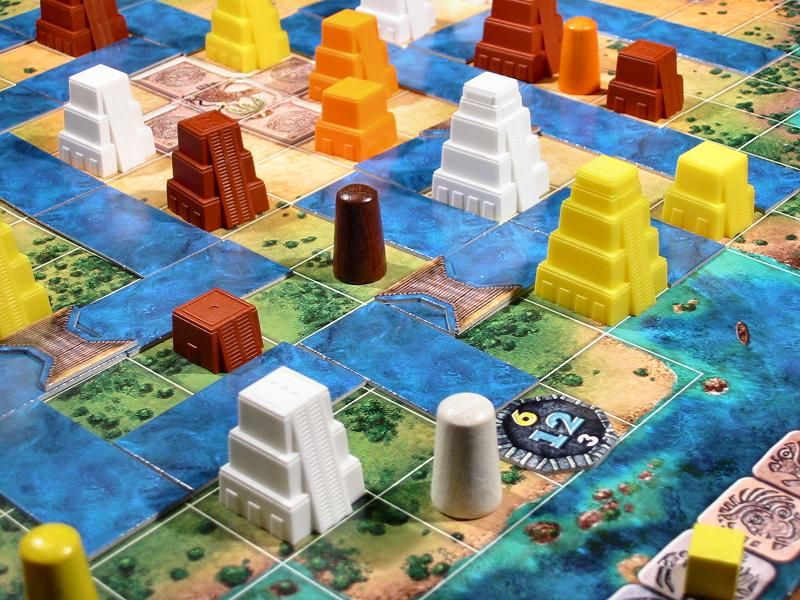
Balance and Fairness in Mexica: Is the Game Really on Even Ground?
If you have ever wanted to experience a board game that feels like a fair Mexican standoff, then Mexica might actually do the trick. I’ve played this game with my usual group—ranging from my strategy-obsessed cousin to my friend who buys Victory Points with emotional guilt trips. Despite our varied tactics and personalities, Mexica keeps us all on our toes.
The heart of fairness in Mexica comes from its action point system. Everyone gets the same allotment each turn, which means you’re never short-changed by the game itself. Forget about randomness! No dice roll will save you or ruin your city empire. You have to plan, plot, and sometimes play dirty (spiritually, not physically, please don’t actually throw pyramids at your friends). The game rewards clever thinking and spatial skills, but also lets you recover from mistakes. Missed out on building the biggest district? You can pivot, block others, or snag a cheeky second place.
Now, Mexica isn’t entirely immune to the occasional runaway leader problem. If someone grabs a huge lead by scoring big early, it can feel tough to catch up, especially if you miss the tactical boat. However, since the board changes so much, alliances shift, and players block each other, it rarely feels like an uphill battle for long. Everyone has a shot at a comeback, right up until the last pyramid falls.
So, is Mexica balanced? For the most part, yes. It gives everyone a fair shake—unless you count personal grudges, which the game encourages with a wink. Next up, let’s find out if Mexica keeps drawing us back for more, and how long we stay lost in the city!
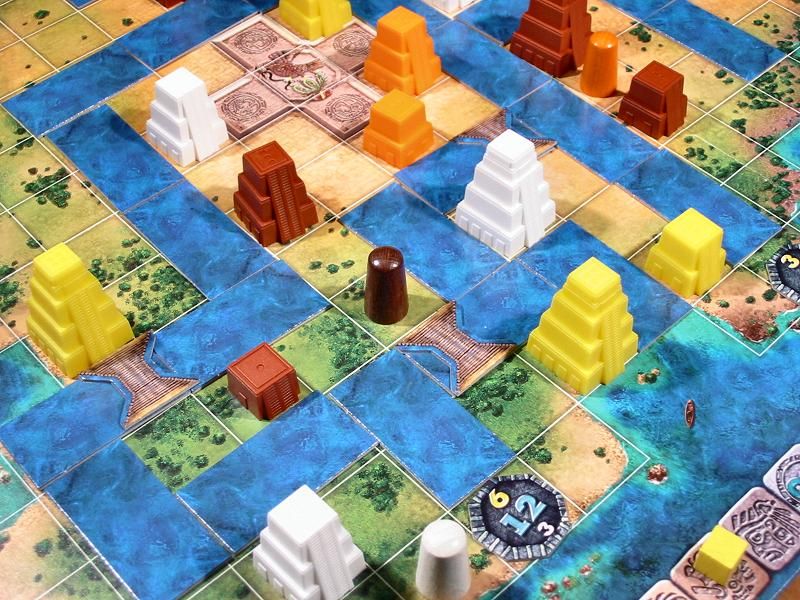
Replayability and Session Length: Is Mexica a Keeper?
Let’s talk about why Mexica keeps crawling back onto my game table, even though my friends swear they’re not coming over again if they get cut off one more time. Replayability is Mexica’s secret spice. The modular board, with its ever-changing canals and districts, means every play is a fresh brain scratcher. My group has made lakes shaped like Australia, the Loch Ness monster, and once—accidentally—my dog. That’s the kind of silly variety you can expect!
No two games of Mexica end up the same, unless you play with Tim, who always tries to make the smallest districts possible just to annoy us. There’s plenty of room for risky moves and clever plans, leading to tables full of groans, fist pumps, or in my case, loudly blaming the cat for my own mistakes. Plus, the action point system means you can always try new tricks. One game, I went all in on canals. Next game, I blocked everyone and watched their faces turn redder than a chili pepper. Both times felt fresh and got me plotting for the next game.
If you’re worried about time, relax: Mexica won’t have you counting your birthdays between turns. With two players who know the rules, you’ll wrap up under 45 minutes. With four folks and a healthy dose of overthinkers (we all know one), maybe it creeps up to 75 minutes. That sweet spot means you can squeeze in a rematch without having to donate your entire afternoon.
Verdict? If you like puzzly, thinky games with loads of replay value but don’t want to spend all night, I fully recommend Mexica. It keeps me coming back, and my friends—grudges and all—can’t seem to stay away either.
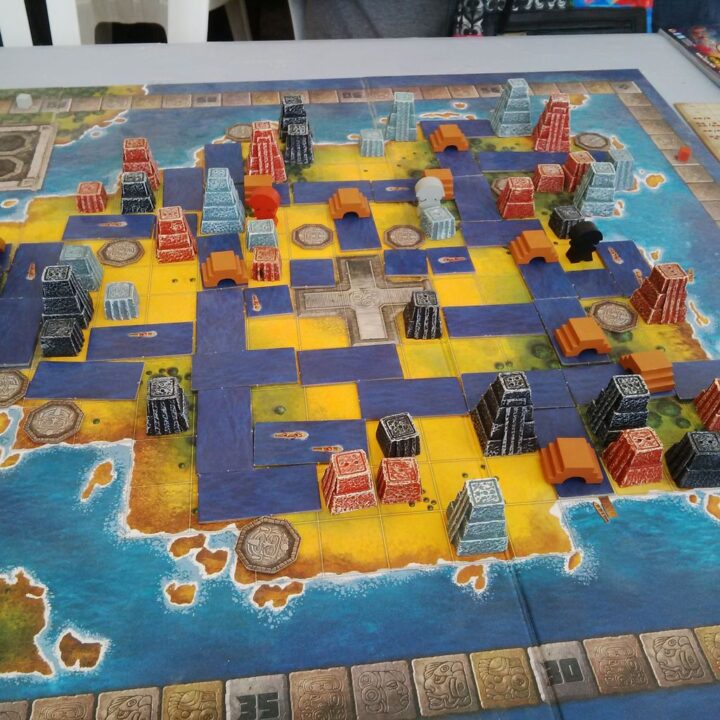
Conclusion
Mexica delivers clever strategy, little luck, and just the right amount of friendly sabotage. Every time I’ve played, it’s turned into a tense showdown of brains and, sometimes, bruised egos (sorry again, Steve). With its chunky pyramids and great replay value, I can see this one hitting the table often. It’s not perfect—grudge holders may struggle, and analysis paralysis can pop up—but if you want a fair fight with lots of room for planning, Mexica brings the goods. That wraps up my review—time to go check if Steve’s forgiven me yet.

